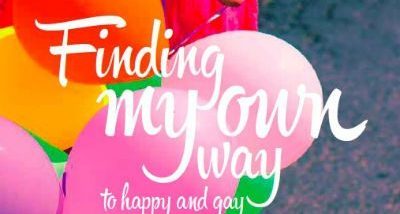A journey to acceptance and understanding of self, starting in 1960s South Africa, at a time where LGBTI visibility was virtually non-existent.
Growing up in South Africa during the heavily controlled and policed Apartheid years was not easy for anyone who did not fit within the small ‘acceptable’ slice of the population who were white, middle-class, straight and Christian. This was a time when a youthful Nelson Mandela was imprisoned for advocating freedom and equality. Barbara Castle-Farmer does not attempt to draw parallels between her life as a white, middle-class, Christian ‘not-so-straight’ young woman in South Africa to the oppression and brutality black South Africans were experiencing at the hands of their own government; but it’s certainly fair to say it was not an easy time for anyone who was different, and being gay in conservative South Africa in the 1960s was certainly different.
For Barbara it was a case of trial and error and a ‘learn on the go’ approach to ‘being a lesbian’ as she made her way through relationships as a teen and young woman in her early 20s in the 1960s and 1970s. As she writes, “There weren’t any Miss Manners’ books of Best Behaviour for Lesbians. There were not thousands of magazine articles devoted to how a lesbian should act in any given situation. We had absolutely no gay role models with which to align ourselves. And nothing we read about homosexuality made us feel delighted at finding ourselves thus. In fact we thought we were the only two women ‘like this’ in the whole of South Africa.”
But Barbara found her way into a small group of supportive lesbian friends and together they worked out how to comfortably exist – sometimes out, most often closeted or at least semi-closeted – with coded language and cheeky double entendres that their straight friends and colleagues would have no chance of following.
But things were changing and evolving in South Africa, so much so that not only would the horrors of Apartheid be torn down, but it would later become one of the first countries on the planet to legalise same sex marriage. This book is a gentle, easy and enjoyable read, telling a story that is not commonly heard in other English speaking or Western countries.
I also enjoyed the structure of the book. Each chapter begins with snippets of the treatment of LGBTI people through history starting back in the late 19th century and bringing us through to what life is like for LGBTI South Africans today. It makes for fascinating reading and makes me personally very thankful to be living at this time. Barbara Castle-Farmer who is “gay – perhaps not always terribly happy but certainly gay. Due to fear much of her life has been conducted from within the confines of the closet” is probably overjoyed to find herself happy and gay here and now in the 21st century.
